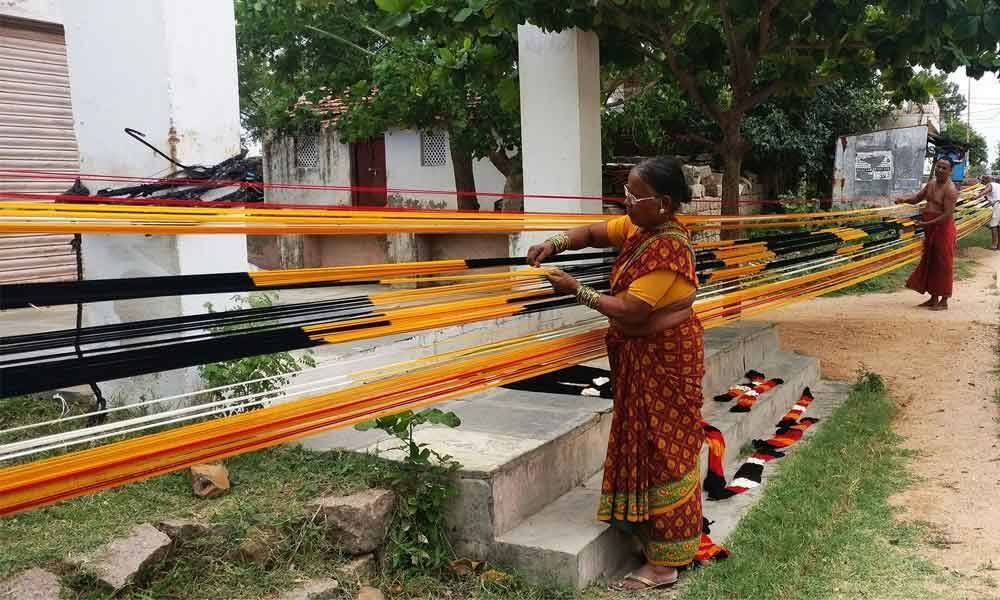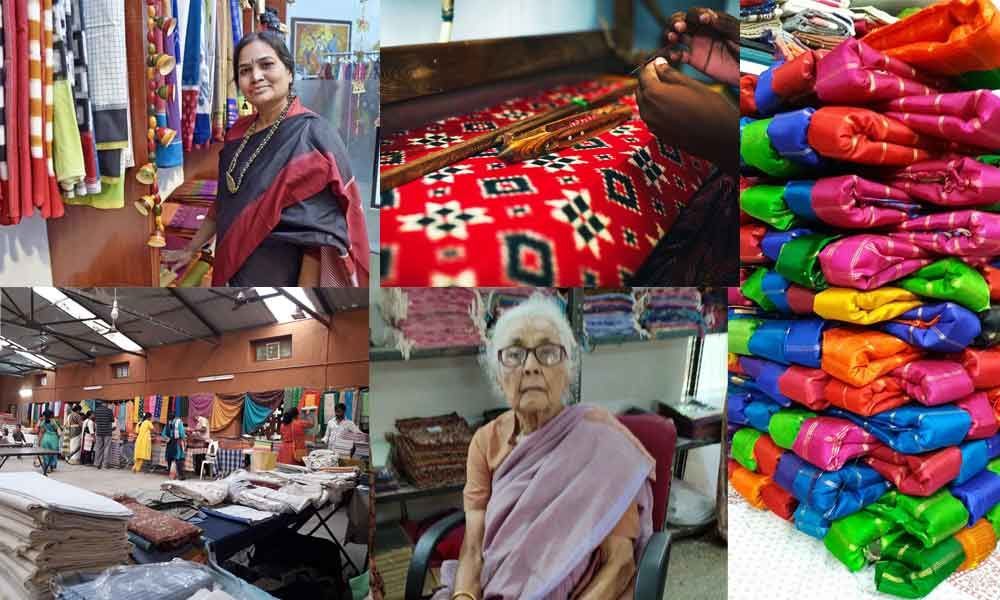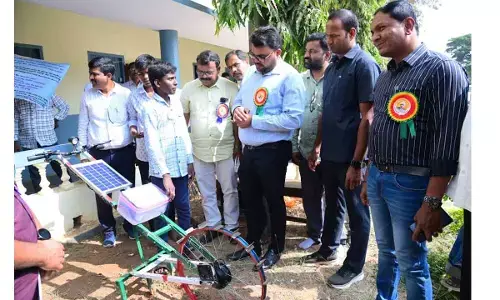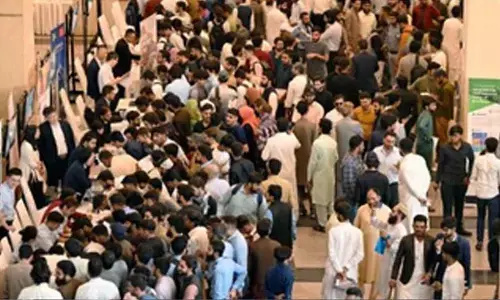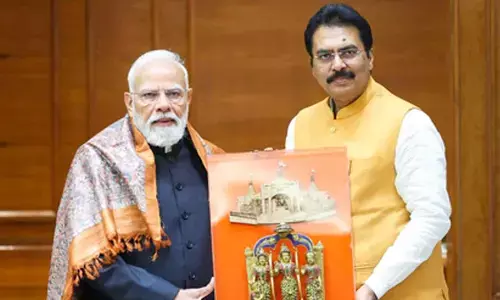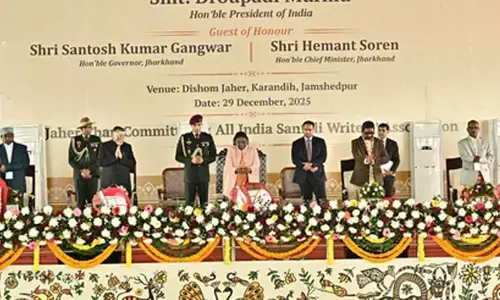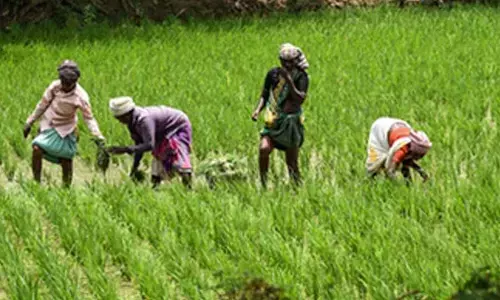National Handloom Day: The cultural fabric of India
Wasn't handloom an Indian way of life! We have a very rich heritage in terms of handicrafts and handlooms.
Wasn't handloom an Indian way of life! We have a very rich heritage in terms of handicrafts and handlooms. Handlooms are never uncool and old-fashioned; it is a fabric that connects us to our history and politics.
Indian handloom is back in the limelight, owing to the initiatives of the government. Apart from government schemes, there are individual steps as well.
Several renowned designers and style gurus are also promoting the fashion industry, using local handloom fabrics. In this way, they are making the handloom textiles global, by incorporating handmade fabrics into high-end fashion and couture.
Gone are the days when it was only seen on activists, politicians or government employees. Every woman is promoting, and they understood that it's an affordable luxury.
India has the most diverse handwoven textile tradition and we must ensure that the weaver benefits economically to continue it.
An epitome of grace and the old-world charm – Suraiya Hasan Bose has been working tirelessly to revive dying weaves like 'himroo' and 'mushroom'.
She made a hundred jalas, each of the fabric that she has woven she made different jalas, which is an archived material that needs to go into the textile museum to been shown that this is how this fabric is woven. And nothing will bring back the intricacy of the weaving by hand.
"I started it as a school and then it transformed into a handloom production firm. When we started it was not that famous among people but today everyone knows it.
And I don't think handloom is about any one person, but it is about involvement many people, even in city 15 to 20 people are working with weavers and working for handloom," says Suraiya.
Handloom means comfort. It is the most aesthetic and skin-friendly fabric that breathes and brings good health to the wearer. Handloom is an eco-friendly fabric that provides livelihoods for thousands of rural artisans.
Saraswati Kavula, activist, farmer and a force behind many initiatives to help handloom weavers, says "It is a fabric of comfort and beauty that is most suitable for all weather conditions; it uses little or no electricity, thus decreasing our carbon footprints and has the capacity to provide employment for millions of rural people."
"People say maintenance is a problem. But today we can even machine wash handlooms using gentle cleansers like Soapnut solution or bio enzymes and use the gentle wash option in the washing machines."
Saraswati feels that handloom and khadi are gaining prominence as consumers are widely choosing these products especially in the Western countries and in elite urban areas.
She says, "In these days of global warming, more and more people are becoming aware of this eco-friendly fabric. As organic farming is for food, so is handloom for clothing.
There is a lot of demand for not just handloom but also for organic cotton clothing and even natural dyed fabrics.
However, the increased labour costs are a deterrent for middle-class consumers. Yet, when we compare with the comfort one enjoys with handloom and khadi fabrics, it's worth all the money."
Many people think handloom is archaic and for the older generation. However, it's an evergreen fabric.
For once anyone starts wearing it; they get so accustomed to its comfort that they won't feel like wearing any other fabric. "There are many designers, who are creating clothes with handloom fabrics for the new generation.
Unlike in earlier times, even weavers are coming up with new designs in yardage - so you can make a trouser, a skirt or a shirt or a multi-layered dress. It's versatile.
Initially, I got some readymade shirts using our weavers' fabrics for office wear. And you cannot find the difference between a regular office shirt and a handloom shirt.
The only hitch is that the fabrics crease. However, people are ready to wear an expensive creased linen shirt, so why not a handloom shirt," Saraswati shares.
About her collection, Saraswati says, "When I started Chenetha Santha in 2015, as a direct marketing platform for weavers. And in turn, the consumers are ensured of getting authentic handloom and khadi clothing.
When I started, I never thought it would go for this long. But we are already in our fifth year. Initially, we gave the stalls for 100 rupees per day cost for each weaver.
And slowly as the business grew, weavers started to contribute part of their sales towards the costs of organising the event.
Thus, finally last month, we were able to pay all the costs of the event from weaver's contribution. And this should ensure the sustainability of this exhibition for times to come."
Sudha Rani Mullapudi, co-founder and CEO of Abhihaara Social Enterprise Handlooms says, "Handlooms for me are a way of life, my identity and my connection with nature and cultural fabric of India.
I have been introduced to the comfort and beauty of it very early in life by my mother."
Handlooms are an important livelihood option for rural India. Sudha says, "They safeguard the environment without any disturbance to nature and are highly energy efficient."
"Some of the weaves and crafts are dying a slow death and we lost quite a few of intricate forms of weaving which we could have saved with timely intervention," says Sudha.
Bina Rao, founder and design head Creative Bee says, "Handloom for me is a mission and professional commitment as a designer. When I started, handloom was one of the second largest employment generation cottage industries in India.
Weavers were struggling to find new markets. We, the designers, took that opportunity to contemporise the handloom for the global market. Polices have made handloom decline over the last two decades.
There is a new insurgence of handloom as a fashion from past 4-5 years, but things have gone out of hands for handloom to regain healthy momentum. Today handloom has become fashionable, but weavers are still poor and deprived!"
About her collection she says, "My handloom collection is always most original in its technique, 100 per cent natural yarn and safe dyes and design and style modern."
Woman injured in stabbing attack in Tokyo, suspect at large
Bengal cop booked for murder over mysterious death of woman home guard, SIT to probe case
Staffer recalls horror of 7-kg gold robbery by armed gang in Karnataka’s Hunsur
25-Year-Old Airline Cabin Crew Member Dies At Gurugram Party; Police Begin Investigation



